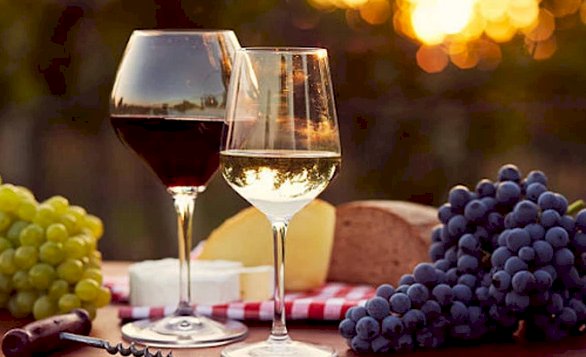Life is too short to drink bad wine
Life is too short to drink bad wine

There are more subtle things in the preservation of wine that the writer is afraid it is too long for this article. However, in general, you can briefly remember that wine is like a fastidious person who likes silence, and does not like light; heavy smell, strong vibrations or low humidity places can cause the wine to oxidize or have mould and other odours that affect it.
There are many people who feel overwhelmed when they first step into the "land" of wine. Not by the intoxication, but by the richness of this vast world.
Me too. A wine lover. A person who wants to write about something he loves. A person has lost countless times not knowing how to start… Finally, I remember the saying: life is too short to drink bad wine and maybe even to keep what you want to share.
So I started…
A Thousand-Year-Old Story
The earliest archaeological evidence indicates that people have been making wine since about 6000 BC in Georgia and about 6500 years from today in northern Greece (Macedonia). A precious drink with a long history has become something that is inextricably linked not only with the history of agriculture but also with cuisine and human civilization becoming popular in the XIV century and something indispensable to many people nowadays.
There are many legends about the origin of the wine, the most notable of which is the story of a Persian king and one of his wives. When she was banished from the kingdom by the king, the wife became depressed and wanted to commit suicide by trying to drink a bottle of rotten leftover grapes marked "poison". But no one knows that the "spoiled" grapes are actually the result of the fermentation process that turns the grapes into wine. After drinking the "poison", she not only did not die but also got more excited and offered her discovery to the king. Immediately, the king fell in love with the new thing and accepted to take his wife back.
With wine, the natural chemical balance from grapes allows the juice to ferment without adding sugar, acids, enzymes, etc., and different grape varieties and strains produce different types of wine. The journey to produce a good bottle of wine for diners is also extremely complicated and rigorous in order to have the best glasses of wine. From about August to October in the Northern Hemisphere and February to April in the Southern Hemisphere is the grape harvest season. After harvesting, the grapes will be processed for pressing and fermentation. After fermentation, the grape juice will be filtered before being placed in wooden barrels for a few months.
These famous wines are the result of a very complex interaction between the biochemical development of the grapes, the reactions involved in the fermentation process, along with human intervention such as ageing time, the type of barrel, steel or oak, new or old, the degree to heat the barrel... in the overall process. Once the winemaker feels that the wine has reached sufficient maturity, the bottling and labelling process takes place to begin consumption.
Some popular and familiar wines for many people can be mentioned as red wine, white wine, and sparkling wine, but there are also lesser-known wines such as rosé wine, and snow wine... If red wine is made from dark grapes and often mixed with grape juice and grape skins to have colours such as red, black, purple, and white wine is made with only grape juice without blending with grape skins.
"I live a very moderate life. However, when friends come over, I pour two and a half or three times as much wine as the doctor allows me to drink." - Late President Thomas Jefferson
Wine connoisseurs can recognize the typical flavours of red wine such as cherry, raisin, strawberry, raspberry, raspberry, pepper, coca, leather, toast, and smoke... while the typical taste of white wine is somewhat softer with orange grapefruit, apple, and pear, grape, lemon, pineapple, honey, floral, grassy and herbal aromas, individual flavours.
Another type of wine that many people are still familiar with at celebratory parties is sparkling wine or champagne. This is a wine that is fermented twice and on the second time, the wine is pumped with carbonate to become an explosive wine, attracting people by the effervescent air bubbles when drinking and the image of white wine bubbles sparkling when opening the bottle. Champagne is the name of a special sparkling wine originating from the Champagne region of France.
“Wine is one of the most civilized things in the world and one of the most natural things of the world that has been brought to the greatest perfection, and it offers a greater range for enjoyment and appreciation than, possibly, any other purely sensory thing.” - Ernest Hemingway
Rosés are less well-recognized than red, white, and sparkling wines. It is made from red grapes, but instead of staying in the water for a long time the skins only stay there for 1-3 days, so rosés won't have much of the acrid taste of tannin. Rose wine is said to have appeared around the 13th century when rosé was considered a noble wine only to be presented to Kings and Popes.
A wine that is rarely mentioned but also famous for its expensiveness is Ice wine (or Eiswein) - snow wine, produced from ripe grapes that are frozen while still on the branches in cold weather. The sugar content and other soluble nutrients are not frozen, only the amount of water is trapped. This has increased the sweetness of the Ice Wine bottles.
Wines around the world fall into two main styles. Those are Old World Wine and New World Wine. Old World Wine, wine is produced in countries such as France, Italy, Germany, etc. and is made in a traditional style. Knowledge of wine is required to enjoy this wine easily. Chilean wines, American wines, and Australian or South African wines are representative of the New World Wine style. This style focuses on the flavour of the wine, so it is suitable for beginners.
Not only keeping the heart healthy, drinking wine, especially red wine in moderation, also helps to lose weight, enhance memory and immunity, prevent osteoporosis, fight age, fight cancer, and reduce depression. Moreover, with the variety of types and prices, not only the elite but also ordinary people can experience this drink, making the culture of wine drinking more and more popular. should be popular. According to statistics from the International Wine and Liquor Organization, global wine production in 2018 is estimated at 27.9 billion litres, of which Italy holds the leading position with 4.8 billion litres and France is in the second position with 4.6 billion litres.
It's not just about drinking a glass of wine
It can be said that enjoying wine is an art, not just simply about drinking. As a drink considered by Robert Louis Stevenson to be a "poem in a bottle", wine drinking culture has become a representation of a refined style, and it is sometimes possible to see a person with a "connoisseur" not simply through the way they use wine. While most are focusing on the wine itself, forgetting that the way a bottle of wine is enjoyed and the atmosphere from a wine party can contribute significantly to creating a perfect glass of wine.
This "art" can be started by opening a bottle of wine. A wine connoisseur will not rush to open a bottle of wine, but will leisurely cut the shell and then gently open the wine to prevent the air from rushing in. Once the bottle is opened, do not close the cork, because that is the time for the wine to breathe and oxidize, making the taste of the wine more delicious.
Wine also needs to be poured into glasses designed specifically for enjoyment. These are usually glass glasses with tall, deep legs and large mouths. And when pouring wine, a delicate person will not rush to pour but gently pour 1/2 to 2/3 of a glass of wine to prevent the wine from splashing out when shaking. It is also important to pay attention to the temperature of the wine and the balance with the temperature of the glass for the fullest flavour of the wine.
One should also avoid holding the bowl of glass so that the body's temperature does not affect the wine. Before drinking, experts encourage people to admire the beautiful colour of the wine, and smell and feel the characteristic layers of aroma. Then, shake to help the wine oxidize and spread the flavour. When enjoying wine, it is advisable to take a small sip, then take another sip and swallow to feel the difference in scent and structure. Finally is the aftertaste, the aftertaste that the wine leaves on the tip of the tongue. This is an important part of whether the wine is good or not.
In addition, the combination of accompaniments also helps to make the wine experience more complete. The French have a saying: "Viande blanche vin blanc, viande rouge vin rouge" (White meat with white wine, red meat with red wine). But the fact is that it is a complex and sophisticated art of harmonious flavour coordination between wine and food that creates a picture full of colour and flavour. There are even dishes created by French chefs specifically for a particular bottle of wine. At the same time, the French are also very interested in the order of the wine served at a meal. They usually start with young wines and end with aged wines, white before red, light before heavy, cold before cool, sour before mellow, normal before delicious… However, there is another general rule that the level of enjoyment must be increased gradually as well as the next bottle has to taste better than the previous one.
There are more subtle things in the preservation of wine that the writer is afraid it is too long for this article. However, in general, you can briefly remember that wine is like a fastidious person who likes silence, and does not like light; heavy smell, strong vibrations or low humidity places can cause the wine to oxidize or have mould and other odours that affect it. Moreover, we should place wine bottles with cork horizontally so that the wine can come into contact with the cork, avoiding the cork from drying out and letting air in.
To produce a bottle of wine is not easy, to find the right bottle of wine and enjoy it properly also needs a process of learning and practice; Even preserving a bottle of wine requires certain precautions. But the feeling of a romantic evening under the candle lights with flowers, between a quintessential culinary feast and sparkling glasses of wine, is truly worth all the complications associated with wine.
Or this summer, in the middle of the sea with fresh seafood, sipping a few sips of white wine or champagne, feeling the cool or bubbly taste of the wine… I believe you can immediately say: This is what happiness in life feels like!
And I also hope that whether you have fallen in love with a wine like me and many others or not, you will also start trying these "poems hidden in the bottle". From there, your culinary journey may be richer, more fun and more complete, especially when you already have your own stories.
Because as someone said, life is too short not to taste good wine- right?
Source: Cafebiz

 BTV WGH
BTV WGH 




























Comments (0)